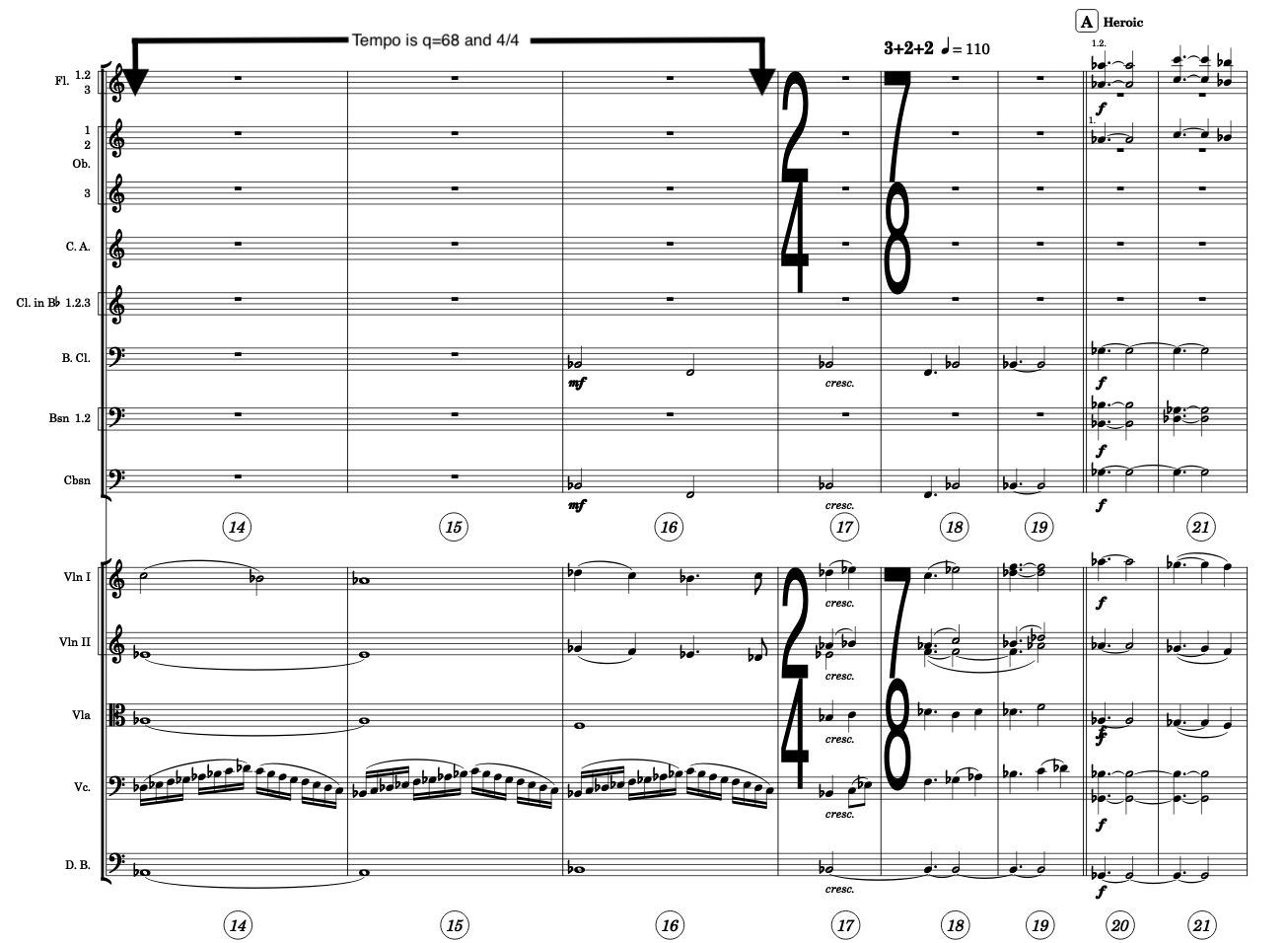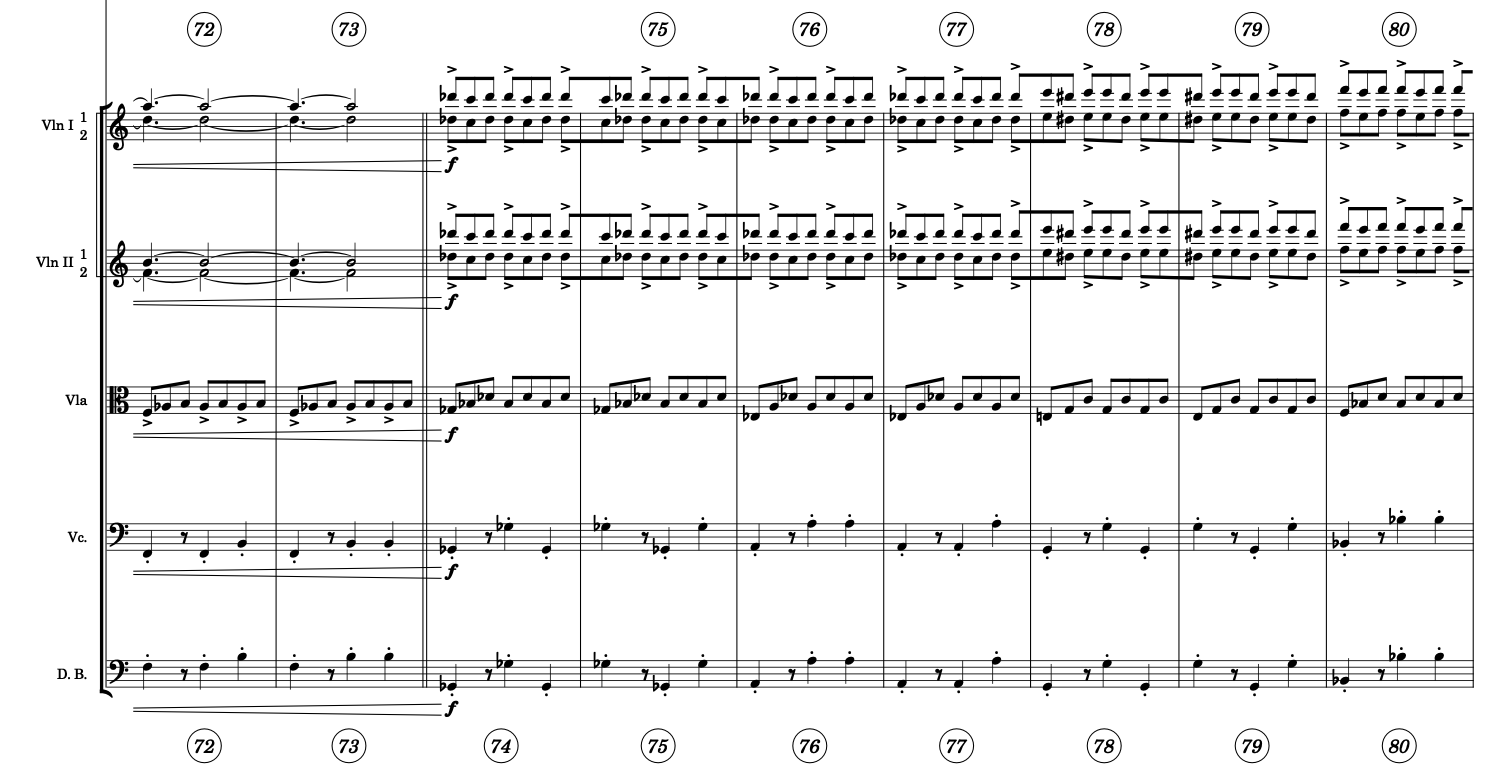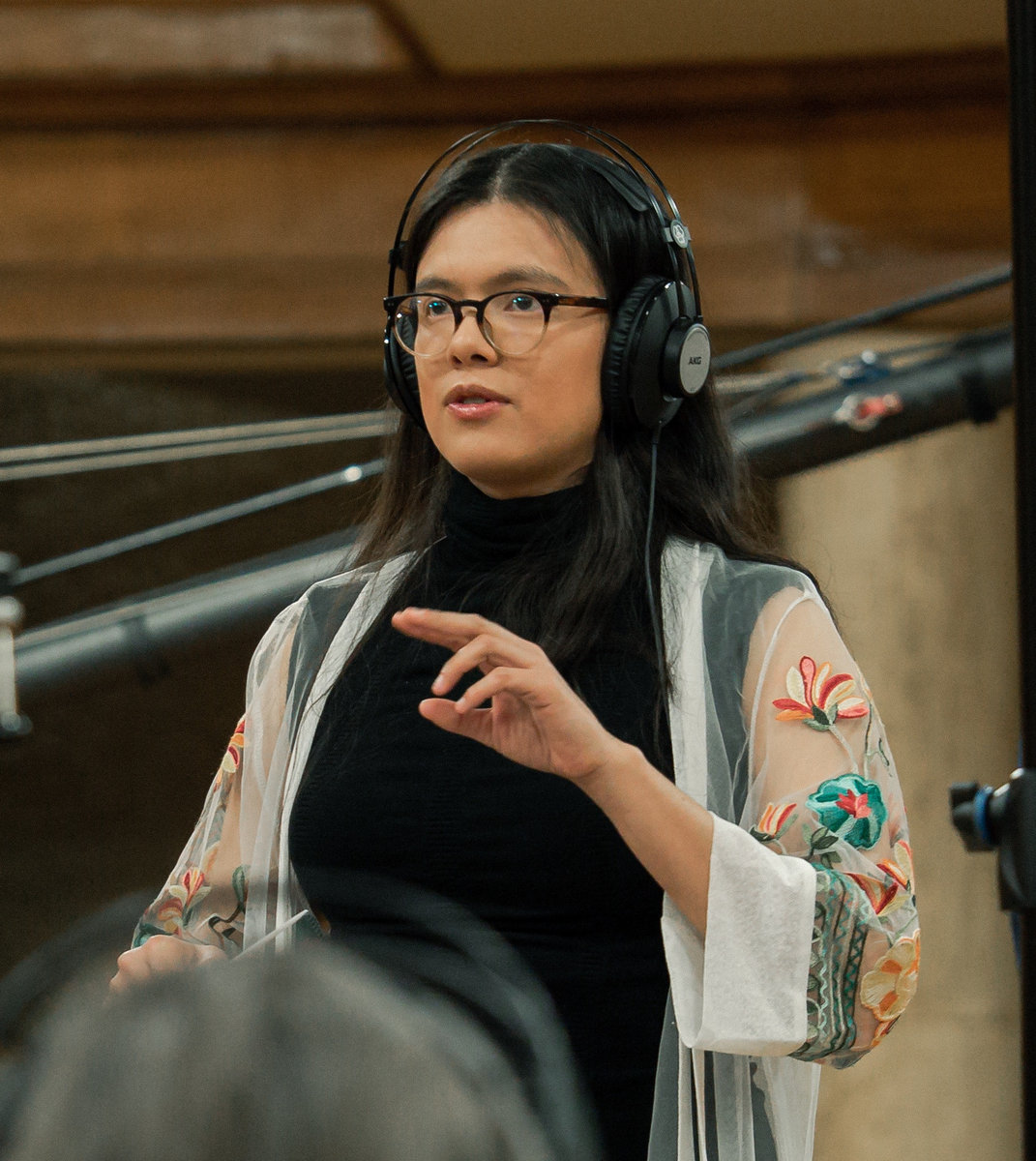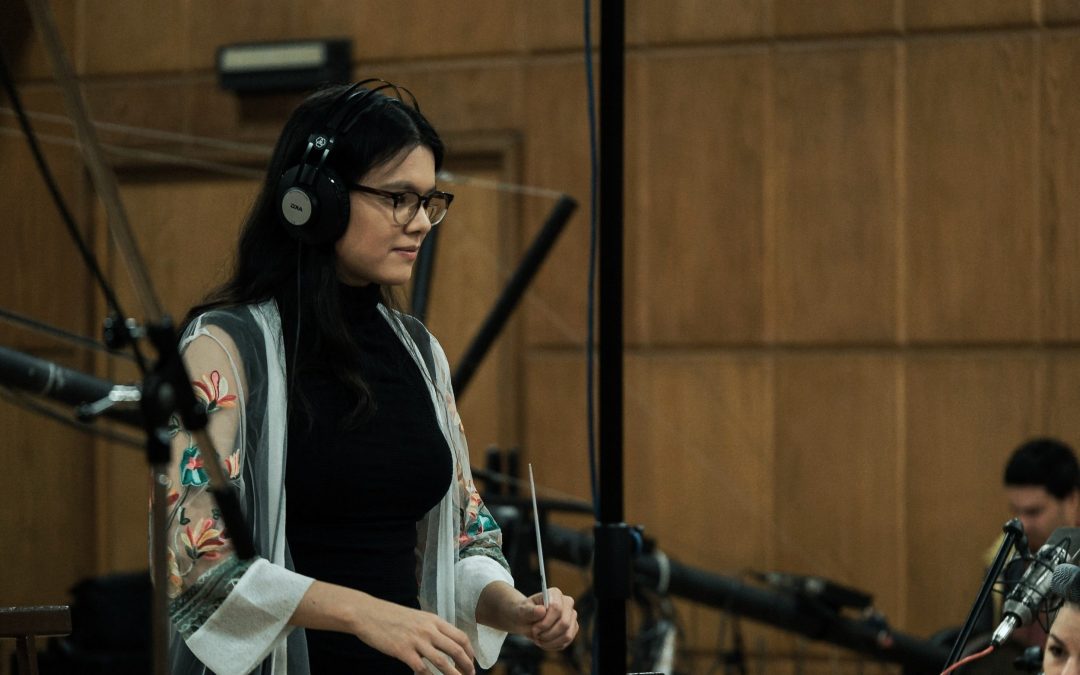Karina Rivero is a distinguished Mexican composer and music producer. Her most recent work Prevail – which she describes as “an ode to adventure” – was released on November 26, 2023. The impressive work was written for an 84-piece orchestra, choir and voices, and was recorded at the Bulgarian National Radio main studio as well as the Sofia Sessions Studio, in Sofia, Bulgaria. Karina recently talked to me about her creative journey using Dorico music notation software, the recording process, and more.
AN: Hello Karina, thanks for taking the time to talk to me. Can you tell us a bit about yourself and your journey as a music composer?
KR: Thank you for talking to me about my music! I’m a composer and music producer from Mexico City. I write music for visual media and performing arts, and I also arrange and produce for other artists. I was a relatively late starter in music – I formally started piano lessons at 14! I knew I wanted to become a composer and made it the goal from day one. I remember arranging popular songs to play in recitals alongside my repertoire. About a year and a half later, I won an online piano contest that brought me to a composition workshop with David Lanz – that’s when I committed to writing. Soon after, I created my first collection of original solo piano pieces, Across the River. I went to university for music production and engineering, while continuing my piano education and getting private instruction from composers like John Nilsen and Latin Grammy nominee Rosino Serrano. I then led the Scoring and Music production department at VAW Estudio, where I wrote and arranged for songwriters and scored films, ads and radio shows, as well as recorded scores for other composers. I then was awarded the Jan A.P. Kaczmarek scholarship to study an MFA in Music for Motion Pictures and Contemporary Media at the Film Scoring Academy of Europe, where I produced orchestral, hybrid and electronic pieces both to picture and as stand-alone compositions. I’ve been working on different projects since. Working on my own material and being part of other people’s projects have made for a great journey so far!
AN: What inspired you to compose Prevail and are there any specific themes or emotions you aimed to convey through the music?
KR: I think of this piece as my ode to adventure – written from my personal musical one. The piece is roughly divided into two large sections. Section A depicts the feeling of stepping into a metaphorical arena, the starting point of a life-changing experience. This section is about slowly taking in the grandioseness and vastness of a moment and a place. And then… action! The journey, the fight, the adventure… It’s exciting, non-stop, with ups, downs and “in-betweens”. That’s section B, full of energy. Prevail contrasts slow amazement and kinetic adrenaline; taking in and giving in. That’s the piece. When I taught music to high school students, I learned so much about pursuing dreams from 16 to 18-year olds who were full of hope and energy for their passions. I wrote for my 14-year old self looking hopefully at the abyss of wanting to be a composer, and for the 28-year old that had been on that path for half her life at the time of writing the piece. Prevail hopefully resonates with listeners.
AN: Prevail involved an impressive ensemble of an 84-piece orchestra, choir, and Bulgarian voices. Can you share insights into the live recording process?
KR: I recently heard that every artist’s new creation is a rite of passage they want to go through. Prevail provided me with that opportunity through its format – the 84-piece orchestra, 20-piece SATB choir and 6 traditional Bulgarian voices. A first and not very often found chance for a big orchestra for a big sound. The recording took place during two different days in two different locations: the orchestra was recorded at the Bulgarian National Radio main studio and the choir and voices at Sofia Sessions Studio; both in Sofia, Bulgaria. It was recorded by the European Recording Orchestra and Four for Music, respectively. Each day, I had a 20-minute recording slot in a shared day-long session with about 15 other composers (40 minutes total recording time + 20 min rehearsal with the choir before recording). Score supervision and production played a huge role. We had 2 score supervisors in the booth to make sure details were correctly communicated between the live and control rooms: Conrad Pope and Hristo Pavlov for day one and Andy Hill and Nikola Petrov for the second one. Petrov also conducted the orchestra and Giorgi Elenkov conducted the choir. It was very important to think of the score as a practical “set of instructions” that all people getting one could understand clearly to have a successful recording. I took a big risk by not making the orchestra stop for a take going into rehearsal mark A (score excerpt shown below). There are both a significant time signature change and a tempo change that were conducted effortlessly by Petrov and the orchestra did a wonderful job. That was my biggest concern, and ended up being the least of the problems during the sessions. It took four takes to get the orchestra and about the same per choir segment. I think it is important to mention that the language barrier represents an additional potential risk to the sessions, so having the right people in a session like this makes all the difference. We also had a music producer, a logistical producer and of course the engineers and assistants. It takes an army – well over 110 people to make a piece like Prevail come to life.

AN: How was your experience using Dorico for composing Prevail? Could you share a specific example or feature in Dorico that made a significant impact on the overall quality and efficiency of your work?
KR: Some of Dorico’s features helped Prevail’s process flow with a lot of ease, namely in the piece sections and polyrhythmic writing processes. Besides its straightforward use as movements or having various pieces in the same document, through flows I was also able to have a “sketch pad” and a “final pad”. This allowed me to have a record of different options to pick from easily. The piece originally had a poly-meter section, which Dorico makes so easy to just type in without messing up every staff. However, the section writing changed over time, naturally, and it ended up having the violins grouped and accented in a triplet-like fashion, beaming across the barline against the rest of the orchestra playing 7/8 grouped as 3+2+2. It translated very well during the recording, and during the writing and engraving processes, Dorico enabled me to experiment and try different options for my intent in that section without too much technical overwork to achieve the notation goal.

AN: How long have you been using Dorico? Have you worked with other music notation software before, and if yes, what distinguishes Dorico in terms of features for your composition process?
KR: I’ve been using Dorico for roughly a year and a half, and I have used other software before. I’ve used Sibelius and I taught MuseScore in a “Composing with free tools” course. Dorico has proven to be a truer reflection of my creative process than other notation software. It really comes down to the simplest stuff, namely the Write and Engrave mode separation. I feel that that’s how I’ve always thought about writing, and it’s great to have it reflected in my notation software.
I often work with MIDI brought from the DAW to orchestrate in Dorico, and the import options make it really easy to allocate each element to its correct player (or players). Both in the writing and playback areas, editing in the piano roll in Dorico feels very familiar and easy. The level of control allows for very specific manipulation, which provides very good audio exports that I can send clients to audition. The MIDI back to the DAW from Dorico is very clean as well. The process of making decisions and changing back and forth in Dorico, as easy as it is, makes a huge difference in the creative and engraving processes.

AN: Can you give us a glimpse into any upcoming projects or works you’re currently exploring?
KR: I am working on two personal releases at the moment. The closest to release date is my EP Chronicles, which will include a compilation of music inspired from different cinematic genres, such as drama, action and adventure. Prevail is included and the EP will be released in April this year. My album Contemplations will feature orchestral and hybrid music, and is a series of slower tempi tone paintings. I am also working on a stop motion film that will feature indigenous instruments from Oaxaca, Mexico – made from the same materials used for the characters! I’m super excited to learn more about them and write for them.
AN: Sounds great! Good luck with all of these and thanks for taking the time to talk to me, Karina!
To find out more about Karina and her work, visit her web site here.
And if you want to try your hand at creating an orchestral epic of your own, download a 60-day trial version of Dorico Pro today!


Great interview! Thank you to both of you.
Ms. Rivero, thank you for sharing how Dorico’s features help you write and develop your compositions. I enjoyed sight reading your sheet music example. Reading and counting through the notes, I found the timing change from 4/4 to 2/4 to 7/8 very simple to sight read. Very well written!
Thank you for your example! I can’t wait to listen to your compositions.
Best wishes!
John Ellard, Sr.
This is wonderful insight!
Vibrant and passionate music with great orchestration. So refreshing. And lovely to see it working in the context of Dorico. Thank you for the inspiration and I too look forward to exploring your repertoire, Karina. More interviews like this, please, Anastasia!